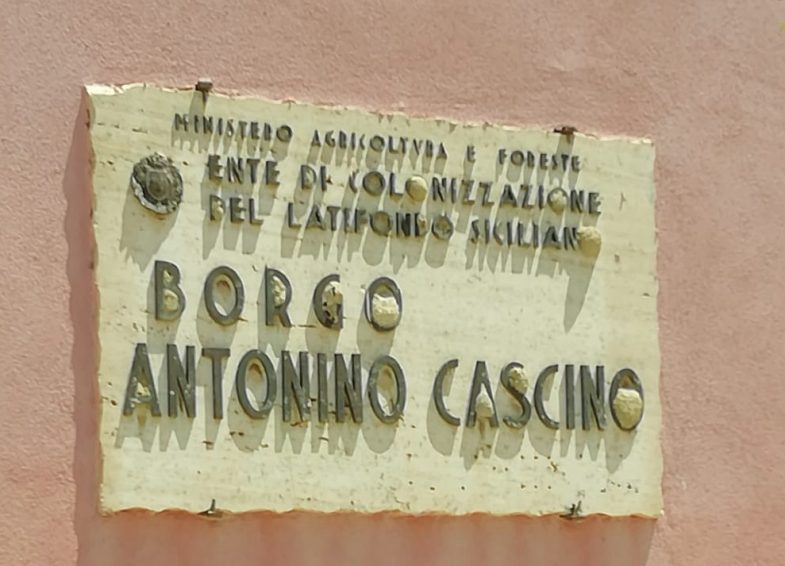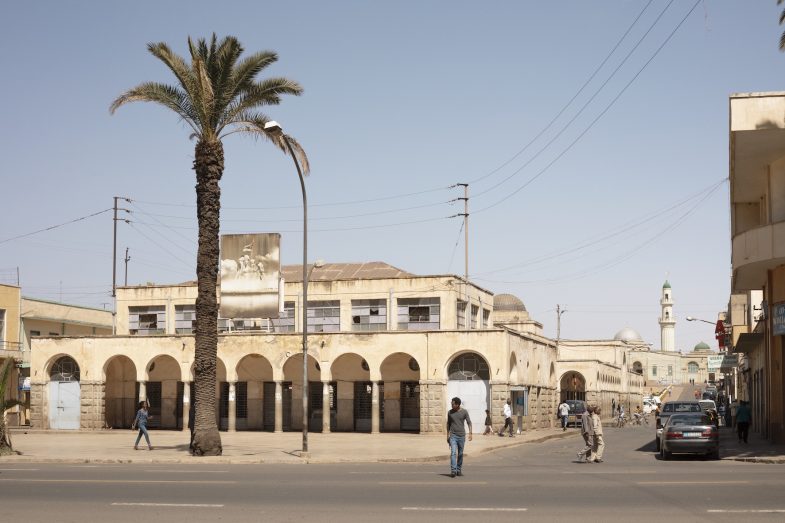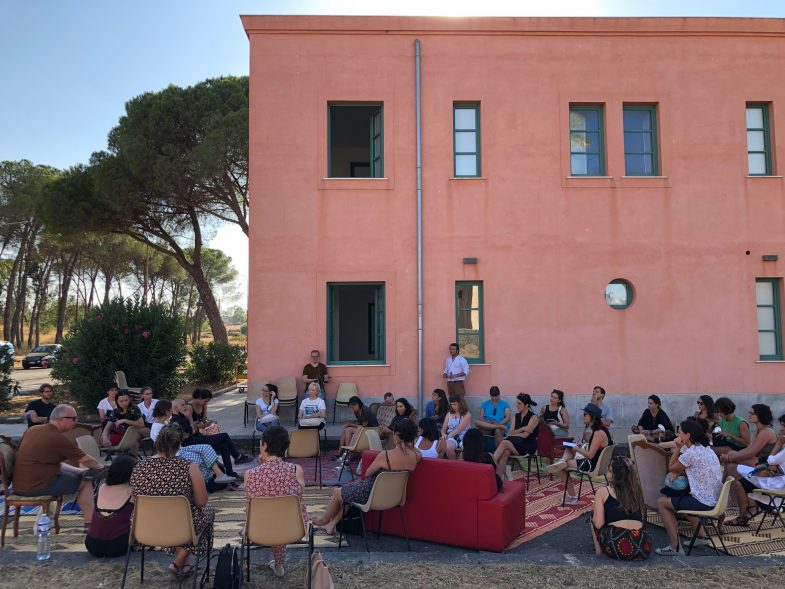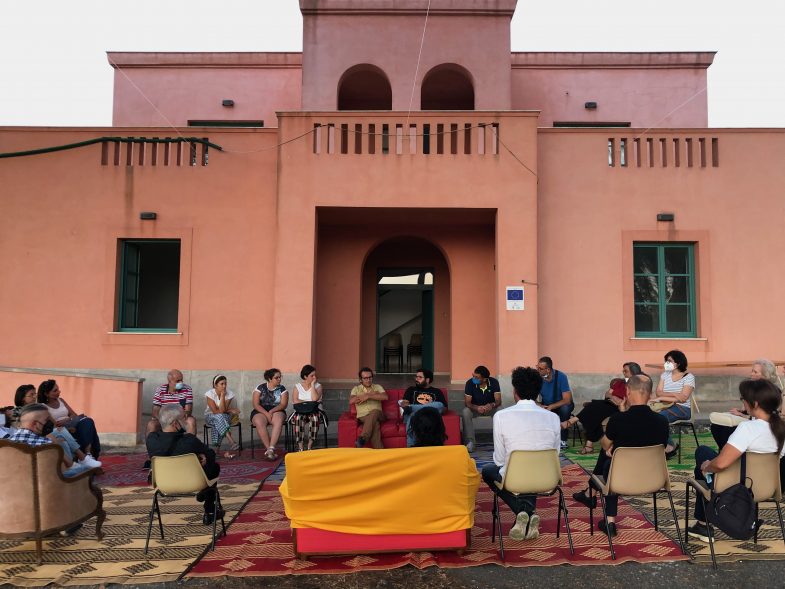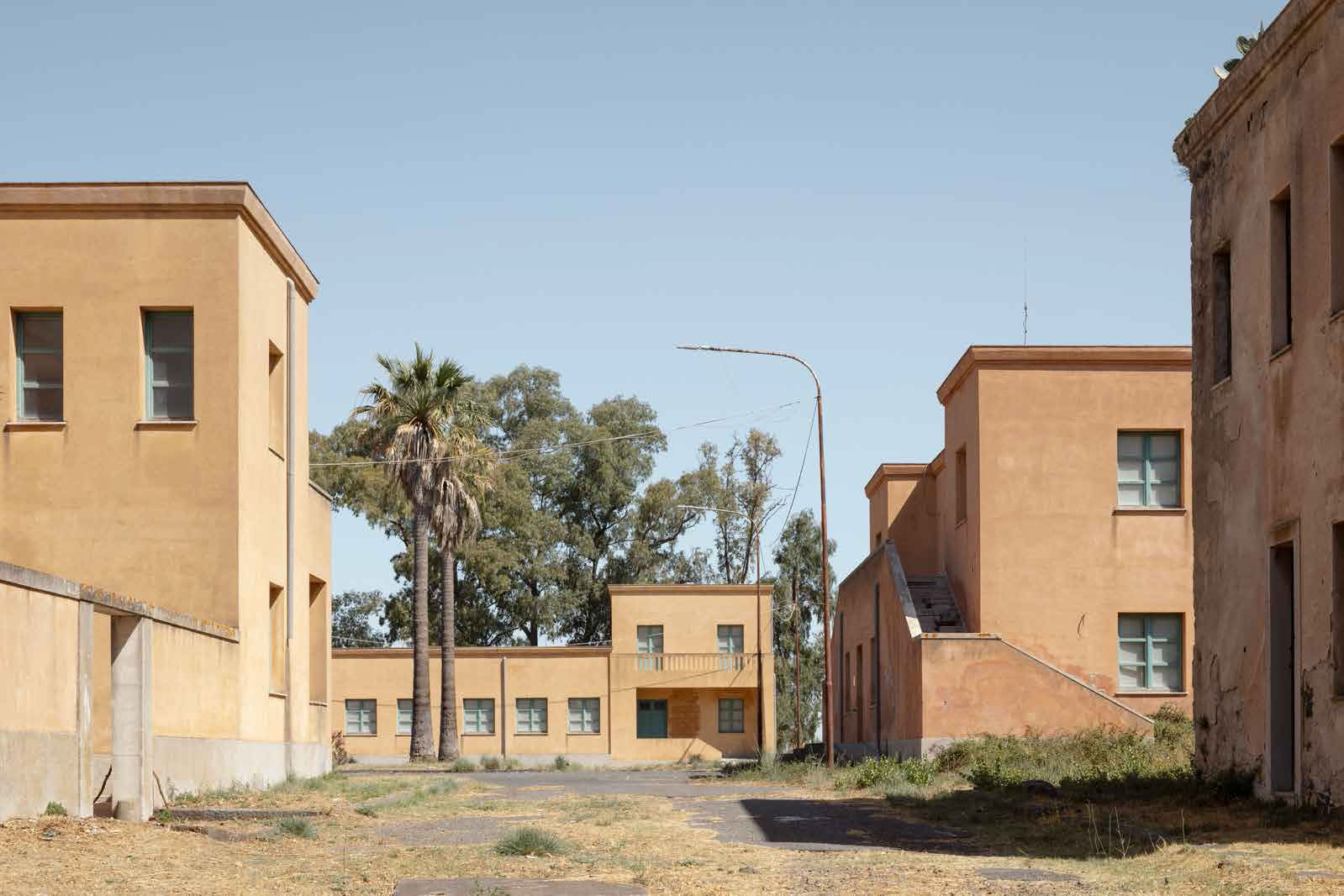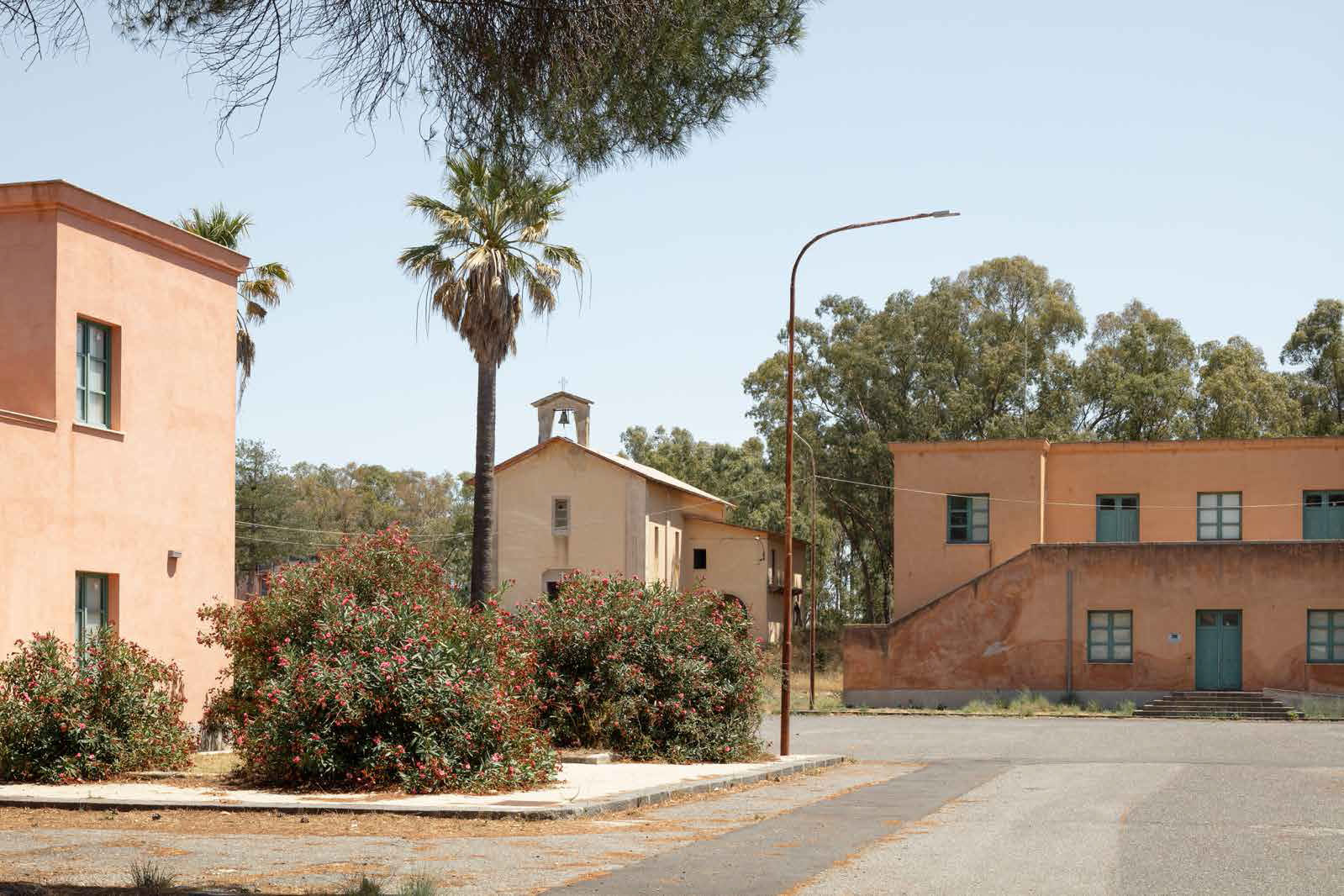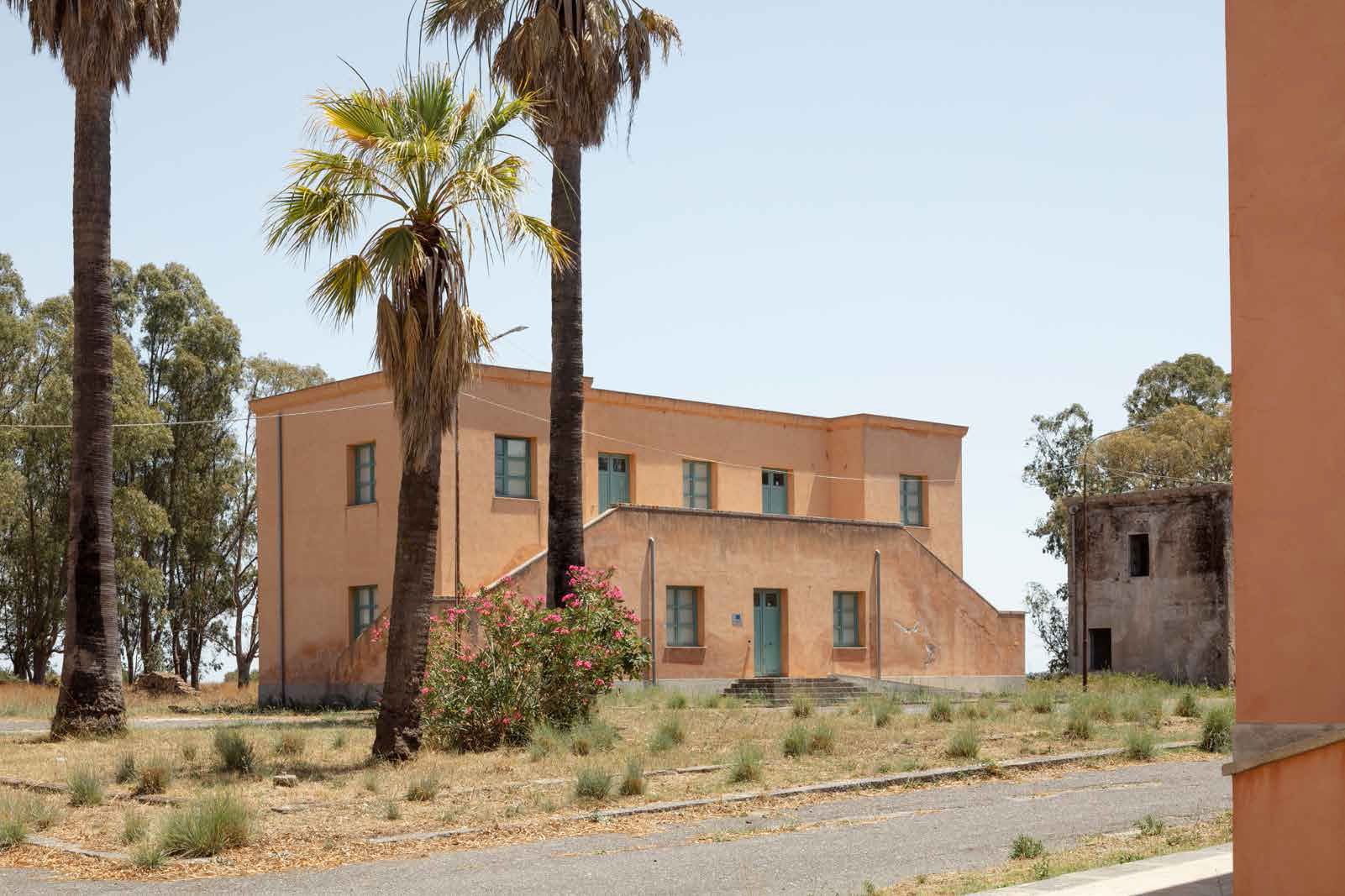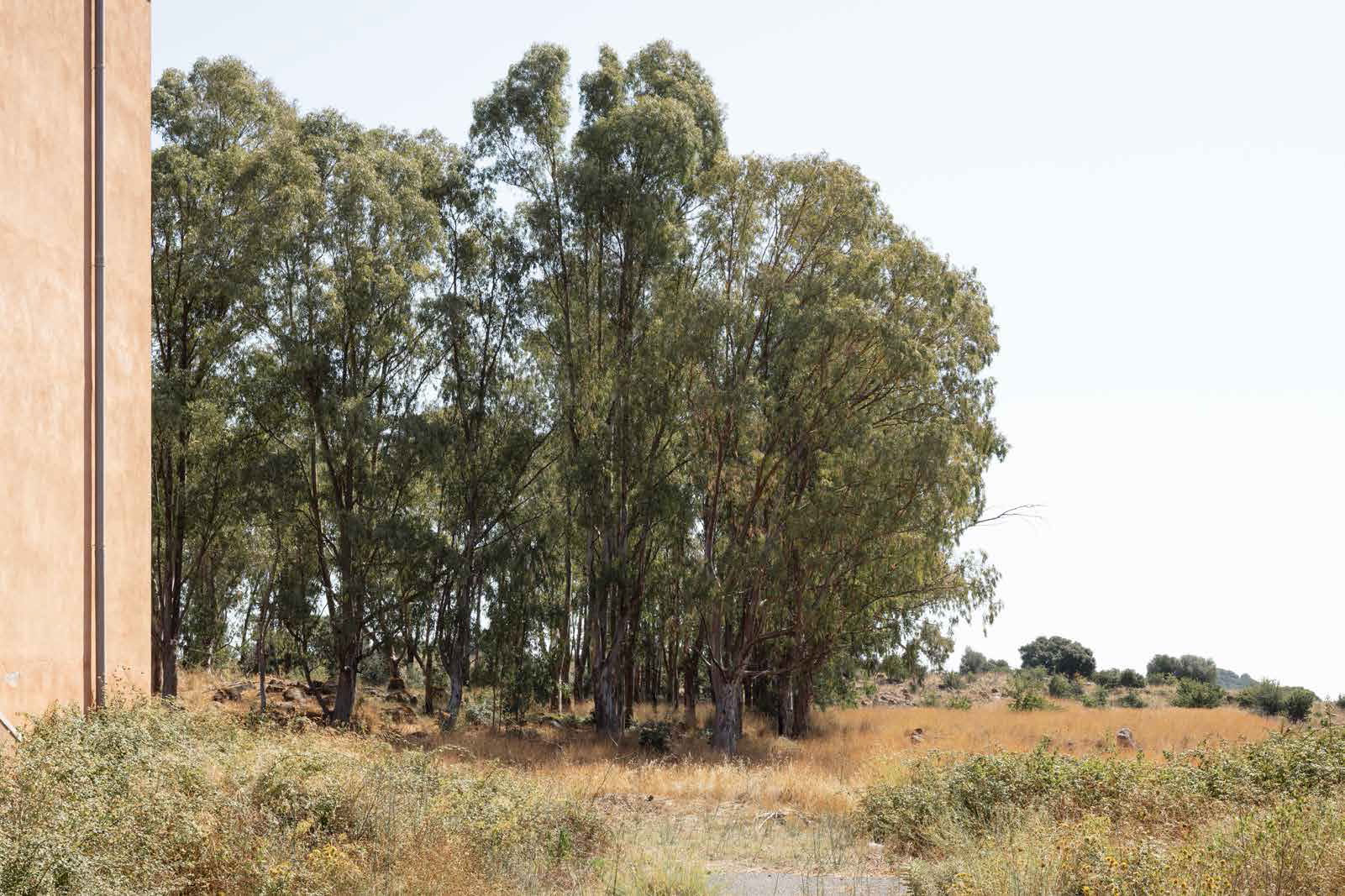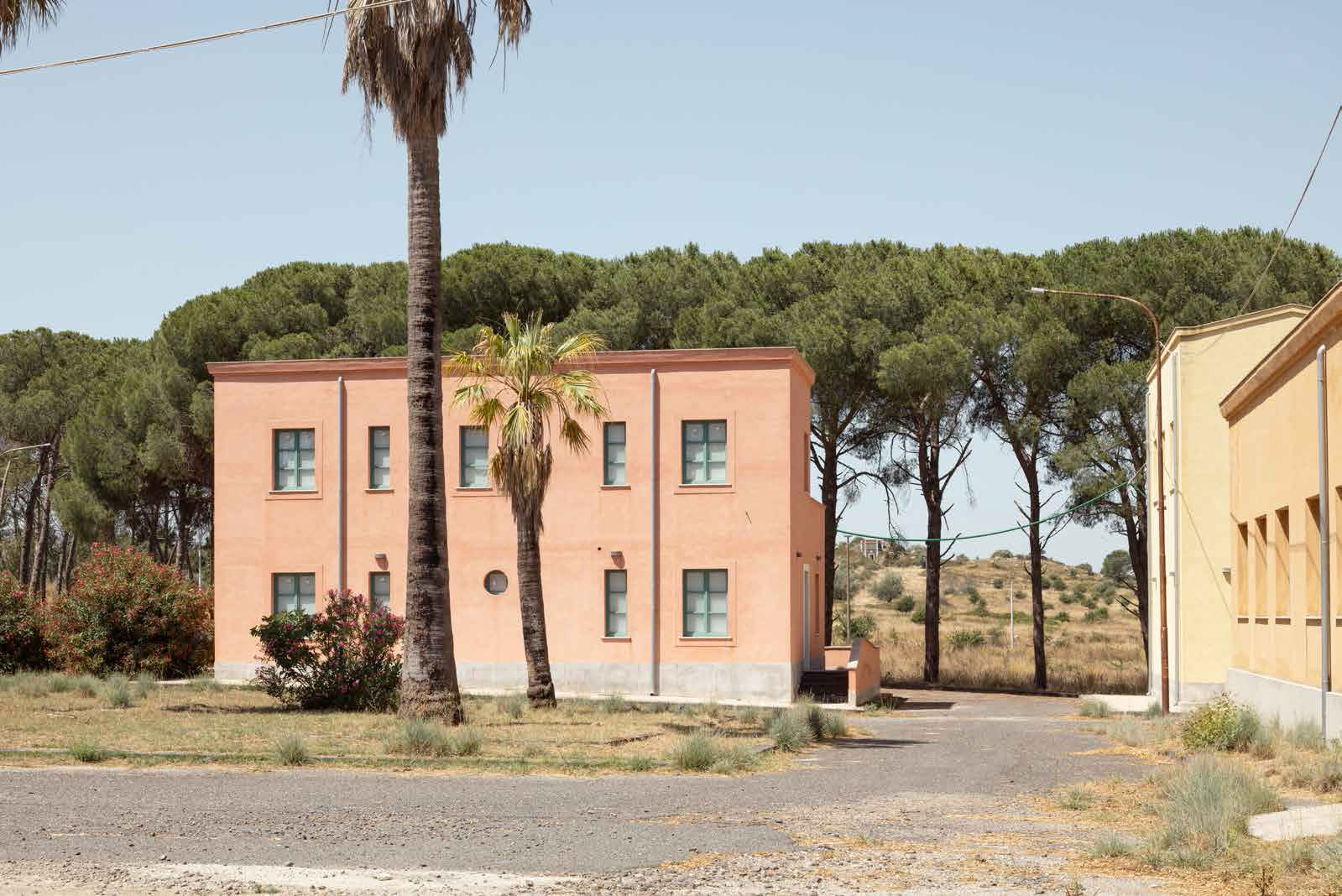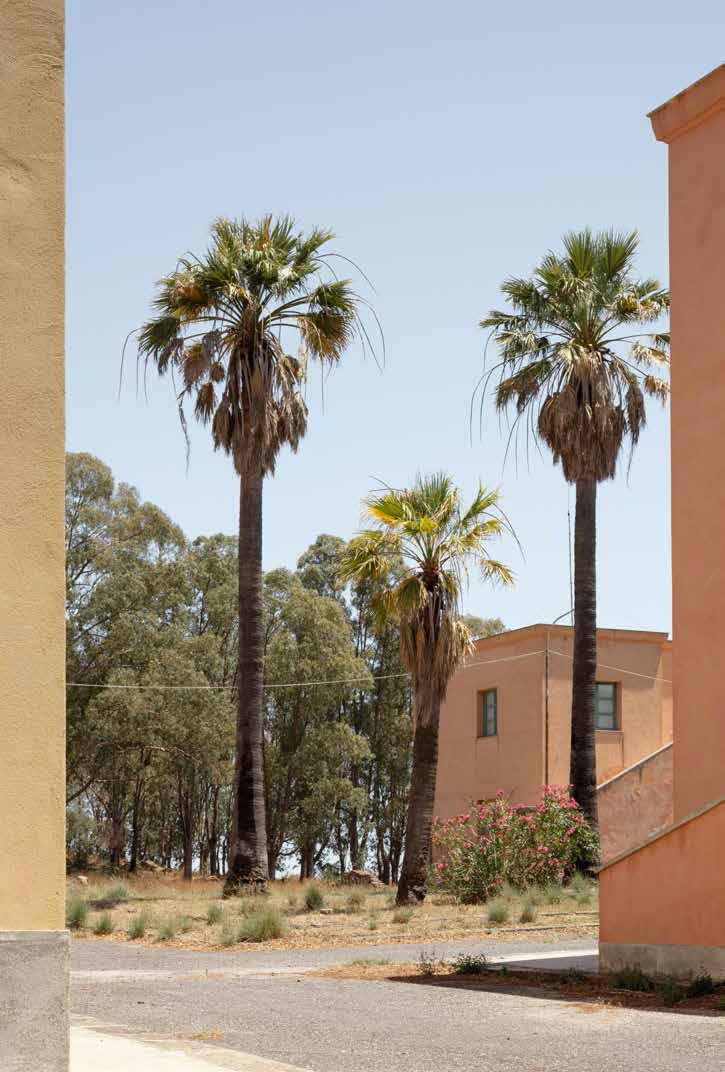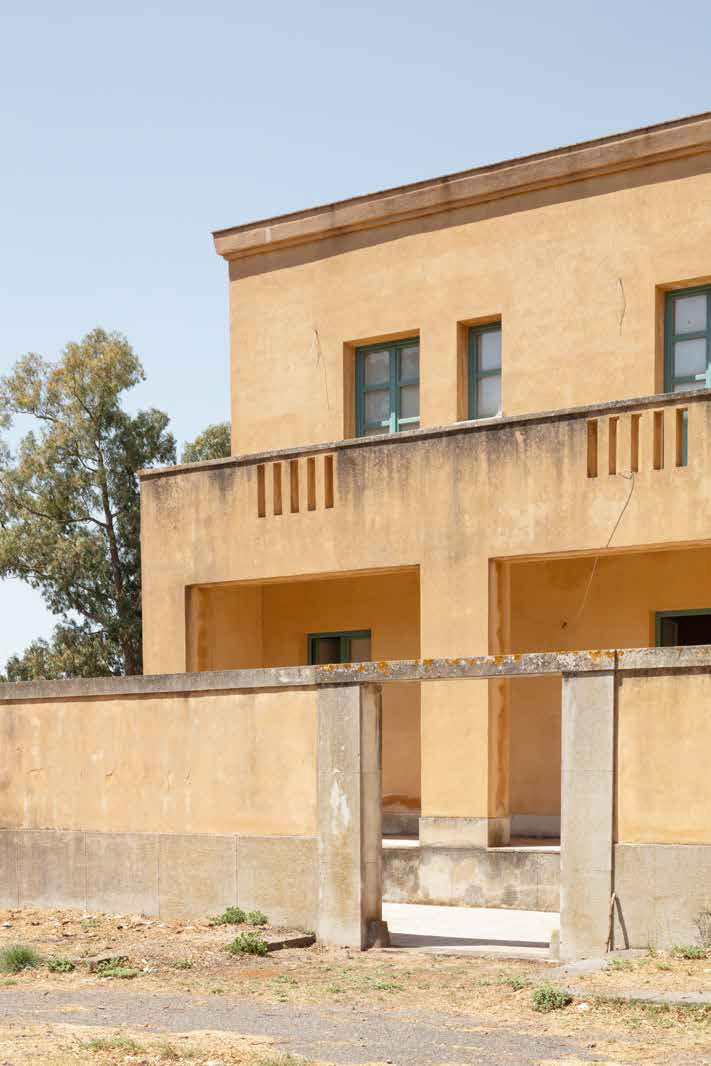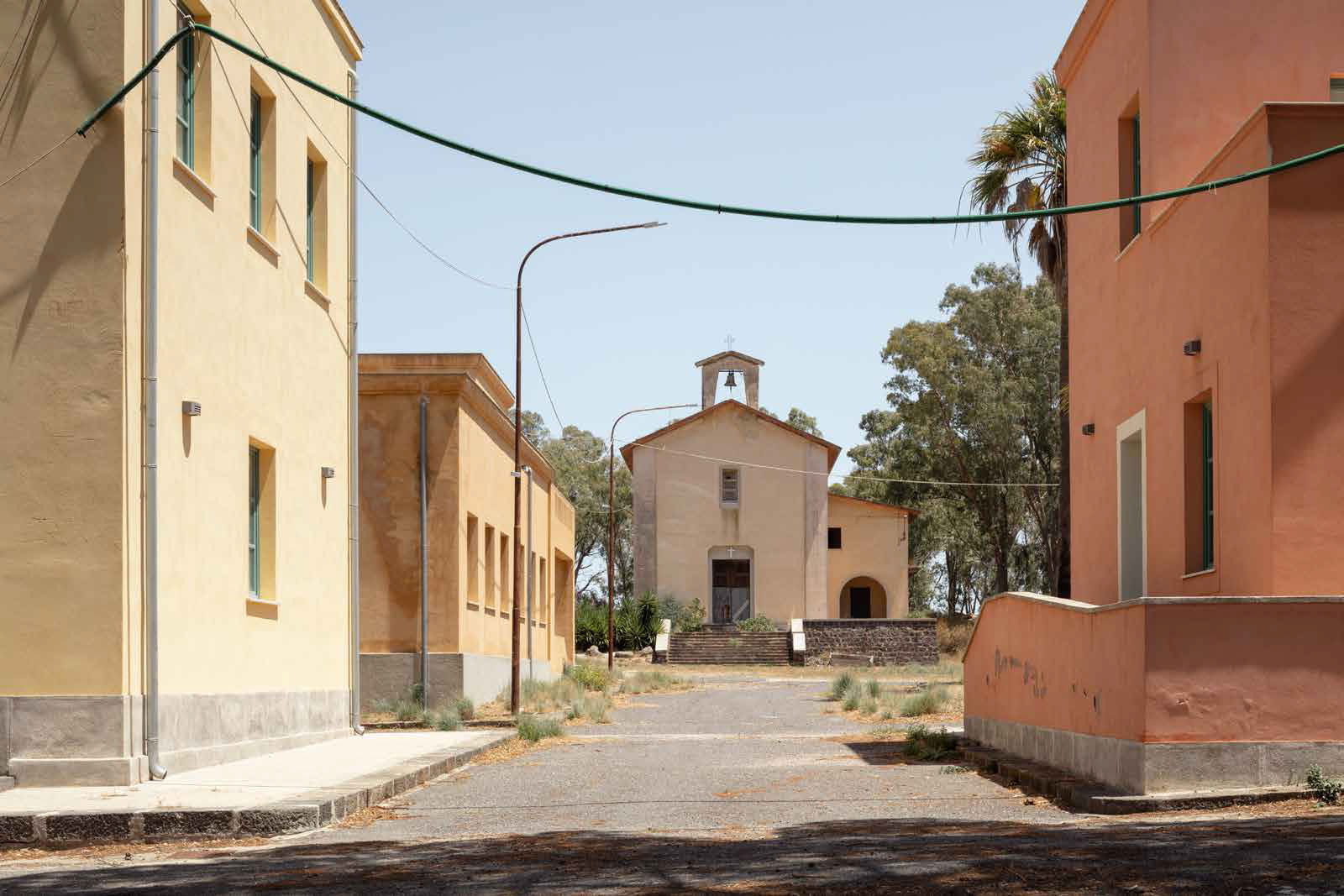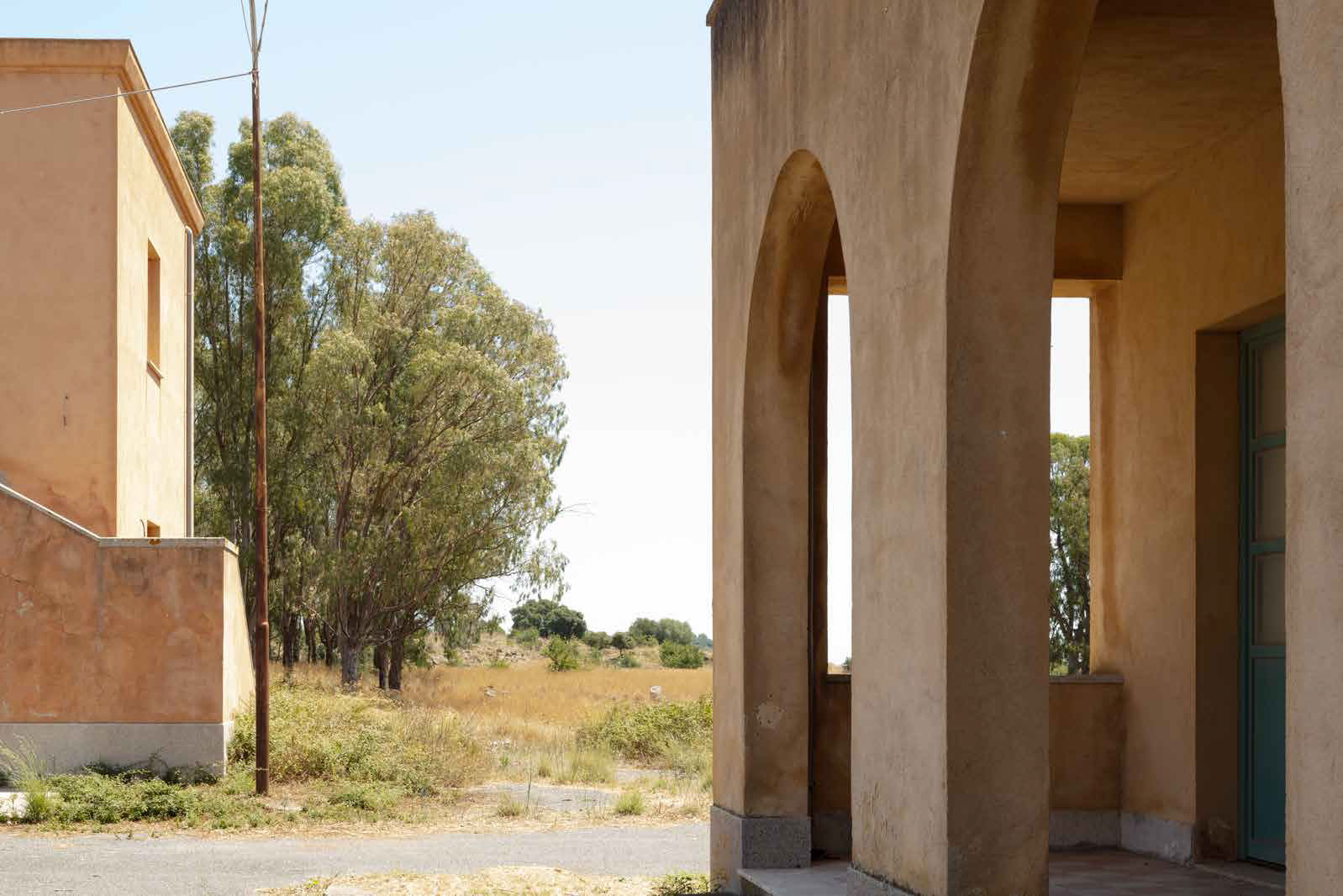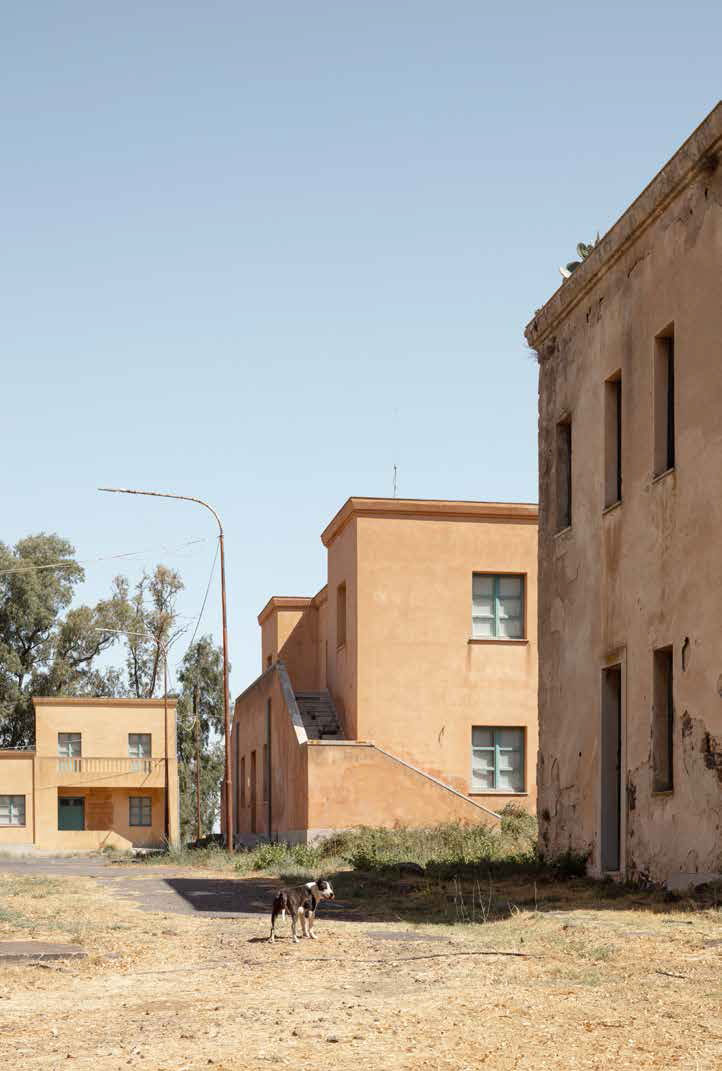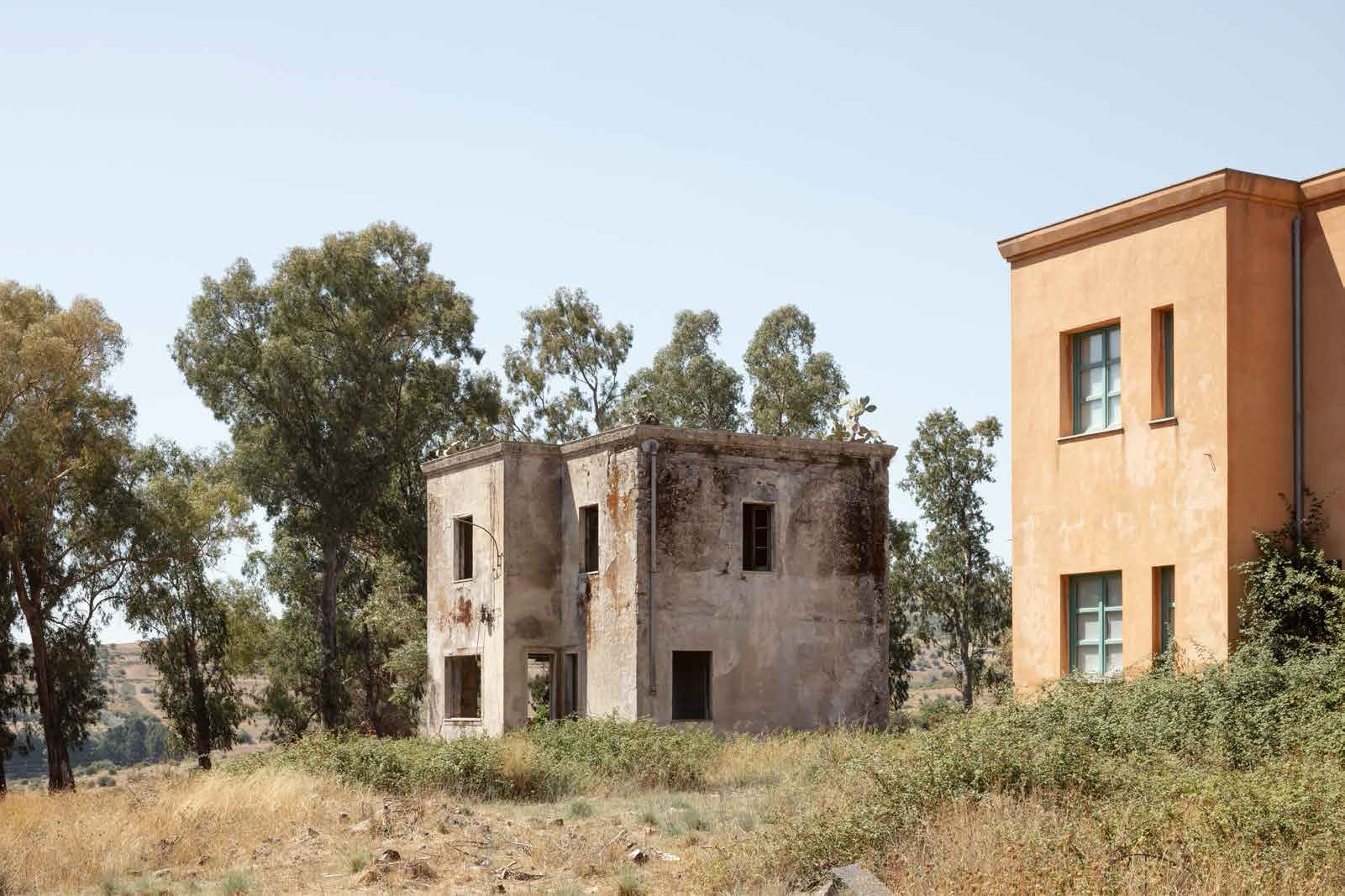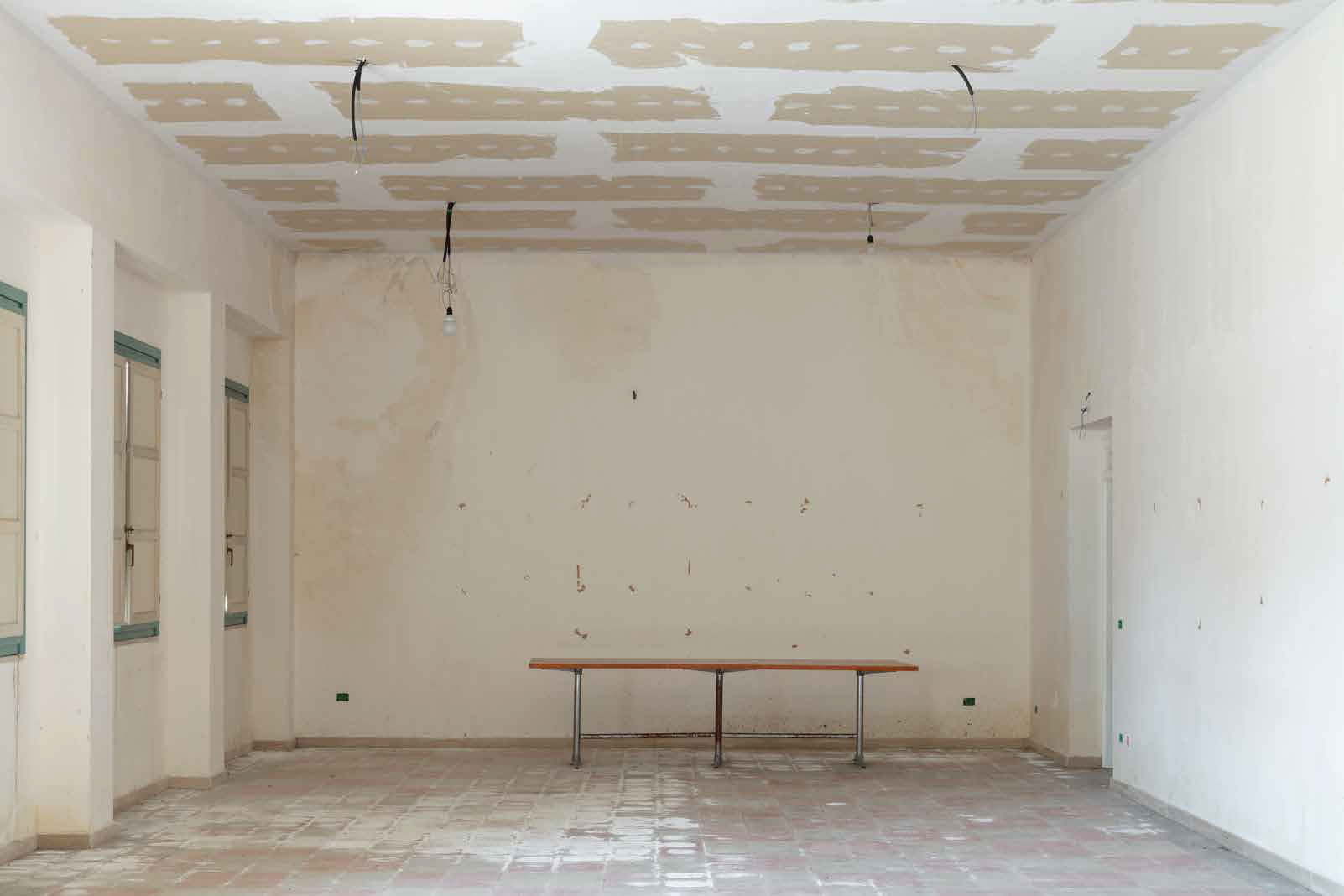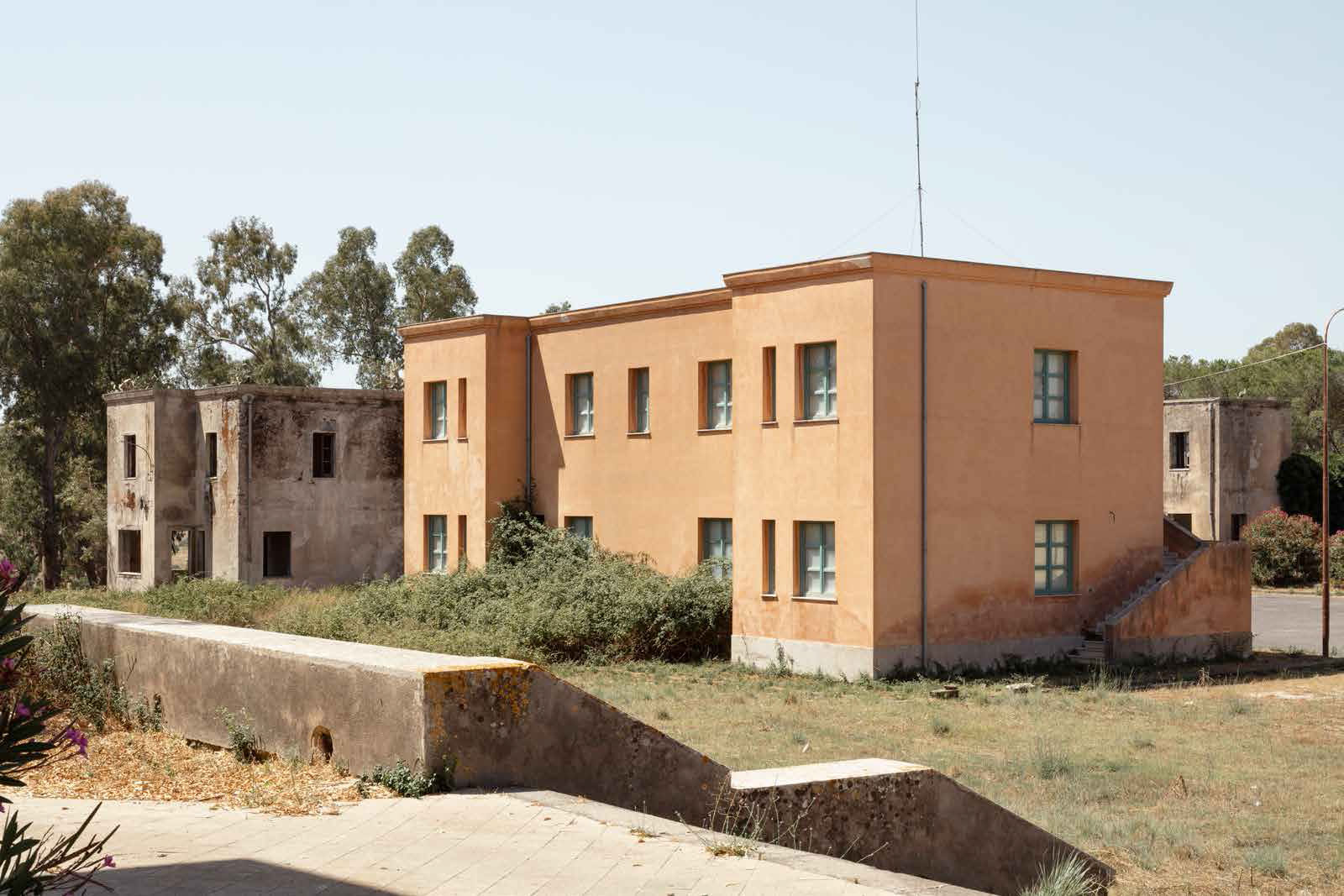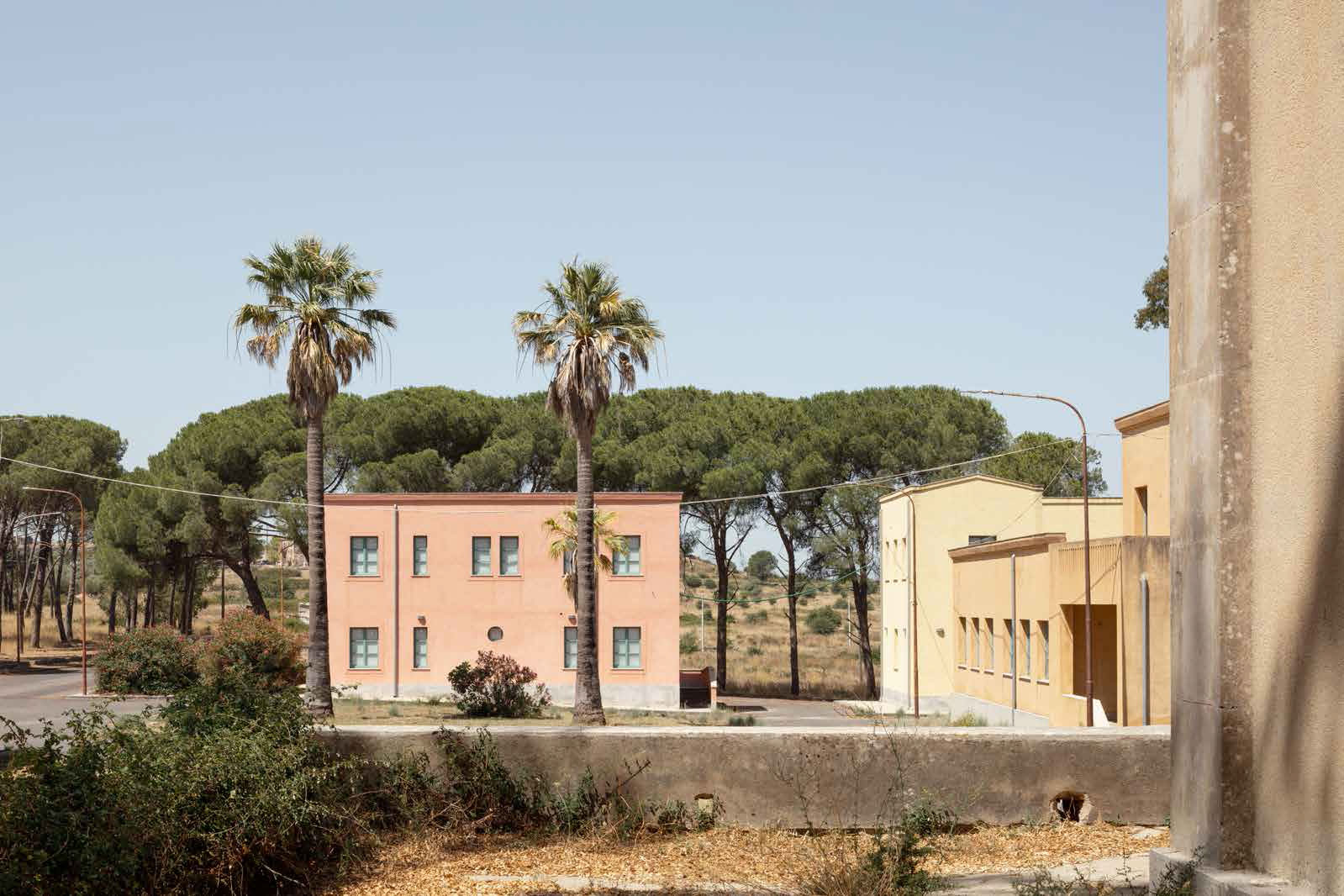Towards an Entity of Decolonization
Sandi Hilal, Emilio Distretti, Alessandro Petti
In 1940 the fascist regime established the “Entity of Colonization of Sicilian Latifundia / Ente di Colonizzazione del Latifondo Siciliano” following the model of the “Entity of Colonization of Libya,” and the colonial architecture in Eritrea and Ethiopia, and what has already been experimented with the plans of integral reclamation and “internal colonization” of the Pontine Marches around Roma. Using different forms of violence and oppression, genocidal forms against colonized peoples, and social engineering and class violence on the Italian front, fascism had identified in these “territories” an abstract, uniform, and homogeneous geographical space to “modernize” and “repopulate,” as it is considered “empty,” “underdeveloped” and “backward.” For this purpose, Sicily had become, in the eyes of fascism, the last front of modernization, whose rural world, as opposed to the city, was considered a “virgin” land to be occupied.
Before the world conflict prevented it, fascism inaugurated eight Sicilian villages until 1943, while others remained unfinished. Following the principles of modernist aesthetics and plans of fascist colonial architecture, the villages were built around the void of the square, the “civic center” of the State institutions aimed at “civilizing” the countryside considered empty and lifeless: the Church, the Post Office, the School, Casa del Fascio, the Entity of colonization, are just some of the institutions designated to forge the cultural, political and spiritual education of the “new fascist colonist”. Thus, the new founding villages would “connect” the various parts of the new Italian Empire to each other.
To celebrate this fictitious unity, many of the Sicilian villages, including Borgo Bonsignore, Borgo Fazio, and Borgo Giuliano, took the name of fascist martyrs and soldiers and settlers who died in Ethiopia during the colonial war of occupation. Simultaneously, fascism had continued the “internal colonization” as an instrument and strategy of oppressing internal dissent. If on the one hand, the villages were conceived as an instrument and space for the agricultural transformation of the Sicilian countryside in an extensive, extractive, and capitalist key, the forced migration plans to the South served the regime to prevent revolts in the northern countryside, break the ties between the agricultural workers with anti-fascist movements, and transforming laborers into small landowners.
Today most of these villages have fallen into disrepair. The depopulation and migrations of the Sicilian countryside after the war, over time, have meant that the buildings that housed the fascist institutions fell into neglect, or in some cases, were transformed by residents into homes. Today, these villages are the materialization of a suspension, not the definitive elimination of a historical and political trajectory. Despite the fall of fascism and the end of historical colonialism, Italy’s de- fascistization and decolonization remain unfortunately unfinished processes. To date, the lack of a critical review process has meant that the cultural and political apparatus of colonialism and fascism has survived: among these, institutional racism and a widespread feeling of the presumed superiority of European civilization, the consequent dehumanization of populations from the (post) colonial world, the surviving of monuments and streets that celebrate fascist and colonial ideology and history, and the lack of an education in critical knowledge of the past within the Italian educational system.
In Italy, as demonstrated by the Sicilian villages, this long-lasting political and cultural impasse is very visible through the normalization or neglect of fascist architecture. As has been debated by postcolonial critics and literature in recent years and loudly contested in 2020 on the wave of global uprisings against the presence of symbols celebrating imperial and colonial violence in urban spaces of the Northern Hemisphere, in Italy, it is very common to find colonial/fascist buildings (as well as monuments, plaques, memorials, and toponymy) which, rather than being removed, dismantled or destroyed, have been left intact. Since the end of the Second World War, fascist architecture (and urban projects) have been reused or developed by republican governments to give a home to the new Italian liberal democratic institutions. The relics of fascism and colonialism have been progressively normalized within urban landscapes, escaping the critical gaze of anti-fascist culture and politics.
To date, with the “return” of fascism on a global scale and the increasing arrival in recent decades of migrants from the former colonial world, the need to reopen the processes of decolonization and de-fascitization has become more urgent than ever. And with them, new questions on “what to do” with the fascist colonial architectural “heritage.” Is it possible to imagine reuse without running the risk of eternally perpetuating this same ideology and against the danger of self-absolution and nostalgia?
In 2017 Asmara, the capital of Eritrea was named a UNESCO World Heritage Site. The nomination, entitled “Asmara – Modernist Citizen of Africa”, refers to the colonial, fascist, and modernist architectural and urban transformation of Asmara that took place during the Italian colonial occupation. Not exempt from criticism, the Asmara inscription poses a series of problematic elements: from the risk of presenting the colonial city built by the Italians as the model of urban heritage of the African continent to the danger of reinforcing nostalgic impulses or constituting a propaganda tool for the Eritrean regime, up to the risk of yielding to the paradigms of conservation of Eurocentric architectural and cultural heritage imposed by UNESCO.
Despite these controversies, the appointment of Asmara nevertheless posed for the first time a series of fundamental questions that concern and unite both ex-colonizers and ex-colonizers: who has the right to preserve, reuse, and re-narrate fascist colonial architecture?
The art installation presented by DAAR for the 2020 Quadriennale d’Arte 2020 – FUORI at Palazzo delle Esposizioni in Rome, home to the first international exhibition of colonial art (1931) and other propaganda exhibitions of the regime, proposes to rethink the villages built by fascism in Sicily starting from the appointment of Asmara as a world heritage site. The installation is the first step towards the creation of Entity of Decolonization that will be open to those who feel the urgency to question a broad historical, cultural and political heritage steeped in colonialism and fascism, and thus start a common path towards new practices of decolonization and de-fascistization.
The installation is the first intervention, and it will be followed by a second step ”Towards a Decolonization Entity / Verso un Ente di Decolonizzazione”: the opening of a summer school, a space for critical knowledge and pedagogy, to investigate the aftermath of colonial and fascist architectural heritage. The school will take place in the summer 2021, in Borgo Rizza, Municipality of Carlentini, (Siracusa), one of the rural settlements built by fascism. The school wants to intervene in the debate regarding the architectural heritage associated with the histories of violent pasts and painful memories. It is a collaboration between the Decolonizing Architecture Advanced Course, at the Royal Institute of Art in Stockholm, the MA program in Critical Urbanisms, at the University of Basel and the local community in Carlentini. The lived experience in these towns will offer the opportunity to elaborate on a series of important questions: What should be done with such troublesome heritage? Is there a possibility for its re-use and for critical preservation without falling into the celebration of colonial/fascist ideologies? Who has the right to reuse and reclaim this heritage? Answering these questions will also help to problematize the exploitative relation of the ‘urban’ with the countryside, histories of migration and unsolved questions of (post)colonial injustice – especially after the renewed interest in the “countryside” at the time of a global pandemic.
Thus, the formation of an Entity of Decolonization wants to pose the question of the reappropriation and re-narration of the spaces and symbols of colonialism and fascism within a broad decolonial perspective, and thus contribute to reversing the Italian trend towards the self-absolving narrative of colonialism “less worse” than the others. In an international context in which the claims of the ex-colonized to true reparation and compensation for the crimes of colonialism and slavery are becoming stronger and more enthralling, the Entity of Decolonization intends to start with simple questions that make it possible to claim the right to re-frame the historical narrative, starting with the presence of the colonial and fascist architectural heritage: given that the villages were built to give shape and body to the fascist ideology, how it is possible to subvert its founding principles, starting from these same places as a new “center” of the fight against contemporary fascisms? How to transform these villages into an antidote to fascism? Who has the right to re-narrate and reuse these villages that were built to celebrate the fascist martyrs in the wars of occupation in Africa? Is it possible to imagine a critical reuse of these places, which becomes an ally of a path of reparation for the crimes of the past? Is reuse intended as a repair conceivable? Is it possible a path of reparation that goes beyond the sphere of bilateral treaties between governments and states? In what forms can this reparation or compensation take shape? Can architectural heritage play a role in all of this?
—–
Data di costruzione: inizio lavori gennaio 1940 / fine lavori ottobre 1940
Riferimento del nome del borgo: Angelo Rizza
Architetto/ingegnere: Pietro Gramignani
Possibile tipologia di borgo: Tipo A
Distretto: Tummarello, Area Carlentini, provincia di Siracusa
Coordinate: 37°13’50.4”N 15°01’26.1”E
Proprietario del terreno prima della costruzione: famiglia Cafici
Valore terreno al momento della costruzione: £ 1.520.904
Costi di costruzione: £ 1.696.800
Stato attuale: parzialmente ristrutturato
Popolazione: 0 (dati relativi al 2011)
fonti Archivio Luce: www.patrimonio.archivioluce.com
www.vacuamoenia.net/it/portfolio/borgo-rizza/
wwwvoxhumana.blogspot.com/search/label/Borgo20%Rizza
www.ascosilasciti.com/it/07/07/2016/borgo-rizza-lo-spreco-siculo-europeo

